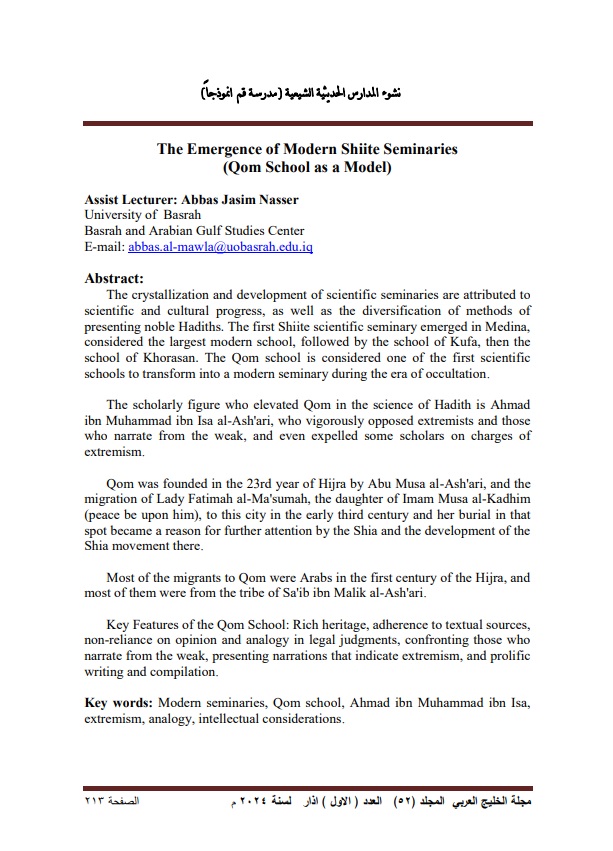The Emergence of Modern Shiite Seminaries (Qom School as a Model)
Keywords:
Modern seminaries, Qom school, Ahmad ibn Muhammad ibn Isa, extremism, analogy, intellectual considerationsAbstract
The crystallization and development of scientific seminaries are attributed to scientific and cultural progress, as well as the diversification of methods of presenting noble Hadiths. The first Shiite scientific seminary emerged in Medina, considered the largest modern school, followed by the school of Kufa, then the school of Khorasan. The Qom school is considered one of the first scientific schools to transform into a modern seminary during the era of occultation.
The scholarly figure who elevated Qom in the science of Hadith is Ahmad ibn Muhammad ibn Isa al-Ash'ari, who vigorously opposed extremists and those who narrate from the weak, and even expelled some scholars on charges of extremism.
Qom was founded in the 23rd year of Hijra by Abu Musa al-Ash'ari, and the migration of Lady Fatimah al-Ma'sumah, the daughter of Imam Musa al-Kadhim (peace be upon him), to this city in the early third century and her burial in that spot became a reason for further attention by the Shia and the development of the Shia movement there.
Most of the migrants to Qom were Arabs in the first century of the Hijra, and most of them were from the tribe of Sa'ib ibn Malik al-Ash'ari.
Key Features of the Qom School: Rich heritage, adherence to textual sources, non-reliance on opinion and analogy in legal judgments, confronting those who narrate from the weak, presenting narrations that indicate extremism, and prolific writing and compilation.




